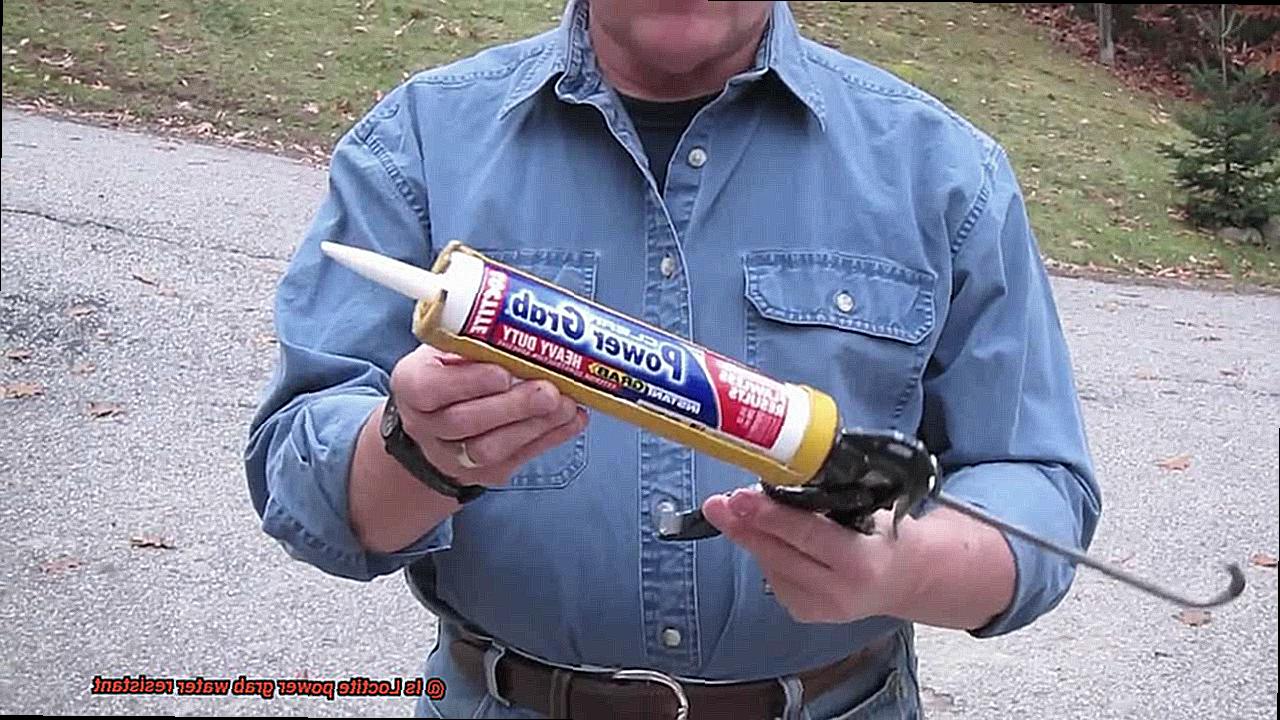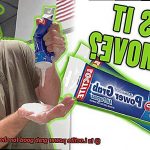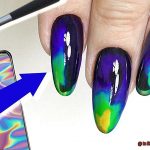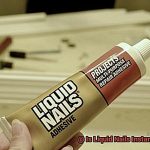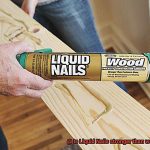Welcome to our blog.
Contents
- 1 Understanding the Properties of Loctite Power Grab
- 2 Is Loctite Power Grab Waterproof?
- 3 How Does Loctite Power Grab Perform in Wet Conditions?
- 4 Benefits of Using Loctite Power Grab for Water Resistant Projects
- 5 How to Maximize the Water Resistance of Loctite Power Grab
- 6 Common Mistakes to Avoid When Using Loctite Power Grab for Water Resistance
- 7 Alternatives to Loctite Power Grab for Waterproofing Projects
- 8 Conclusion
Today, we’re taking a deep dive into the fascinating world of adhesives to answer one burning question – is Loctite Power Grab water-resistant? Have you ever wondered if this mighty adhesive can withstand the relentless assault of moisture?
Well, you’re not alone in your curiosity. Whether you’re a DIY enthusiast or a seasoned professional, knowing the ins and outs of your tools and materials is absolutely essential.
So, buckle up and get ready for an exhilarating exploration into the water resistance properties of Loctite Power Grab. We’ll be sharing intriguing tidbits, uncovering interesting facts, and delving into all the nitty-gritty details you need to know.
So, grab your trusty tool belt and let’s embark on this exciting watery adventure together.
Understanding the Properties of Loctite Power Grab
When it comes to adhesive products, understanding their properties is essential for making informed decisions. In this article, we will explore the properties of Loctite Power Grab, a popular construction adhesive. By diving into its water resistance capabilities, recommended applications, and advantages, we can gain a comprehensive understanding of this versatile adhesive.
Water Resistance of Loctite Power Grab:
Loctite Power Grab exhibits a certain degree of water resistance, making it suitable for areas with occasional water exposure. While it may not be as effective as specialized waterproof adhesives in terms of continuous submersion or heavy moisture, it can withstand damp conditions without compromising its bonding strength. This makes it ideal for interior applications such as bathrooms or kitchens.
Recommended Applications:
Loctite Power Grab is designed for bonding various materials like drywall, wood, foamboard, and ceramic tiles. Its versatility allows for use in a wide range of construction and DIY projects. However, it is important to note that it is not recommended for fully submerged applications or areas with constant water contact.
Advantages of Loctite Power Grab:
Despite its limitations in terms of water resistance, Loctite Power Grab offers several advantages that make it a popular choice. Its quick grab formula provides instant hold and reduces the need for clamping during the curing process. This saves time and effort during project completion. Additionally, its high initial tack allows for faster bonding, minimizing waiting time and allowing you to move on to the next steps sooner.
Is Loctite Power Grab Waterproof?
When it comes to tackling projects that involve water or moisture, ensuring that your adhesive is waterproof is crucial. So, the question remains: is Loctite Power Grab waterproof? Let’s explore the details to find out.

Loctite Power Grab is a renowned construction adhesive appreciated for its exceptional strength and durability. Its versatility allows it to bond a wide range of materials, including ceramic, metal, wood, concrete, and most plastics. However, when it comes to water resistance, several factors must be considered.
Firstly, let’s delve into the composition of Loctite Power Grab. As a latex-based adhesive, it primarily contains water as its solvent. This may initially raise concerns about its ability to withstand water. However, fret not. Once the adhesive cures, the water evaporates and leaves behind a resilient bond.
When applied correctly and fully cured, Loctite Power Grab forms a robust and waterproof seal capable of withstanding exposure to moisture and occasional contact with water. This makes it ideal for use in areas where slight exposure to water or moisture is expected, such as bathrooms, kitchens, or outdoor applications. So whether you’re installing a backsplash in your kitchen or attaching tiles in your bathroom, Loctite Power Grab can handle the occasional splash or steam without compromising its effectiveness.
Nevertheless, it’s important to note that the level of water resistance may vary depending on factors such as application method, substrate surface, and conditions of use. To ensure optimal performance, it is crucial to follow the manufacturer’s instructions meticulously and allow sufficient time for the adhesive to cure before exposing it to water or moisture.
While Loctite Power Grab offers impressive water resistance for intermittent exposure, it may not be suitable for applications requiring continuous immersion in water or prolonged exposure to moisture. For such cases, specialized waterproof adhesives or sealants specifically designed for those purposes are recommended.
In conclusion, Loctite Power Grab is indeed waterproof to a certain extent. Its ability to withstand occasional exposure to water or moisture while maintaining its strong bonding capabilities makes it an excellent choice for various projects. However, for tasks involving continuous water immersion, exploring other specialized options would be wise.
How Does Loctite Power Grab Perform in Wet Conditions?
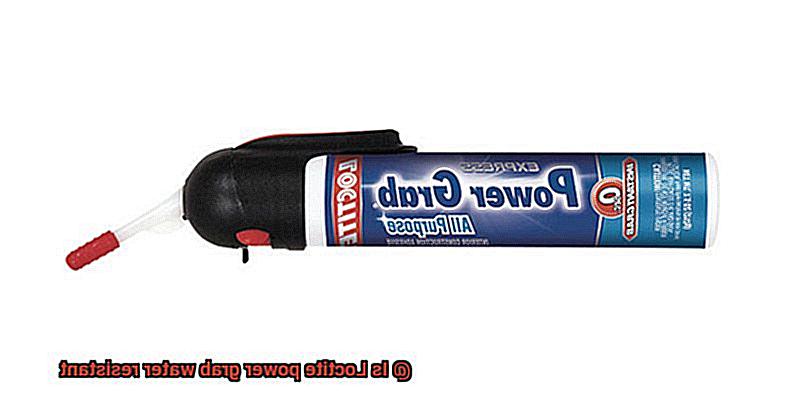
When it comes to adhesive failures in wet conditions, Loctite Power Grab is the ultimate hero. This construction adhesive is designed to perform like a champion, even when faced with moisture and water. Whether you’re tackling a bathroom renovation or an outdoor project exposed to the elements, Loctite Power Grab has got your back.
One of the standout features of Loctite Power Grab is its impressive water resistance. Thanks to its advanced formula, this adhesive is specifically engineered to repel water and prevent it from seeping into the bond. This means that even in damp conditions, your project will remain secure and intact. No more worrying about the integrity of your work when faced with rain or high humidity.
But it doesn’t stop there. Loctite Power Grab also offers excellent adhesion in wet conditions. Even if the surface is wet or damp, this adhesive will still bond effectively, as long as the surface is clean and free of debris. This makes it a reliable choice for projects where you can’t wait for everything to dry out before getting to work.
While it’s recommended to apply Loctite Power Grab in dry conditions whenever possible, the fact that it performs so well in wet conditions is a huge advantage. Just make sure to follow the manufacturer’s instructions for best results. They may recommend allowing additional curing time or applying the adhesive in a specific manner.
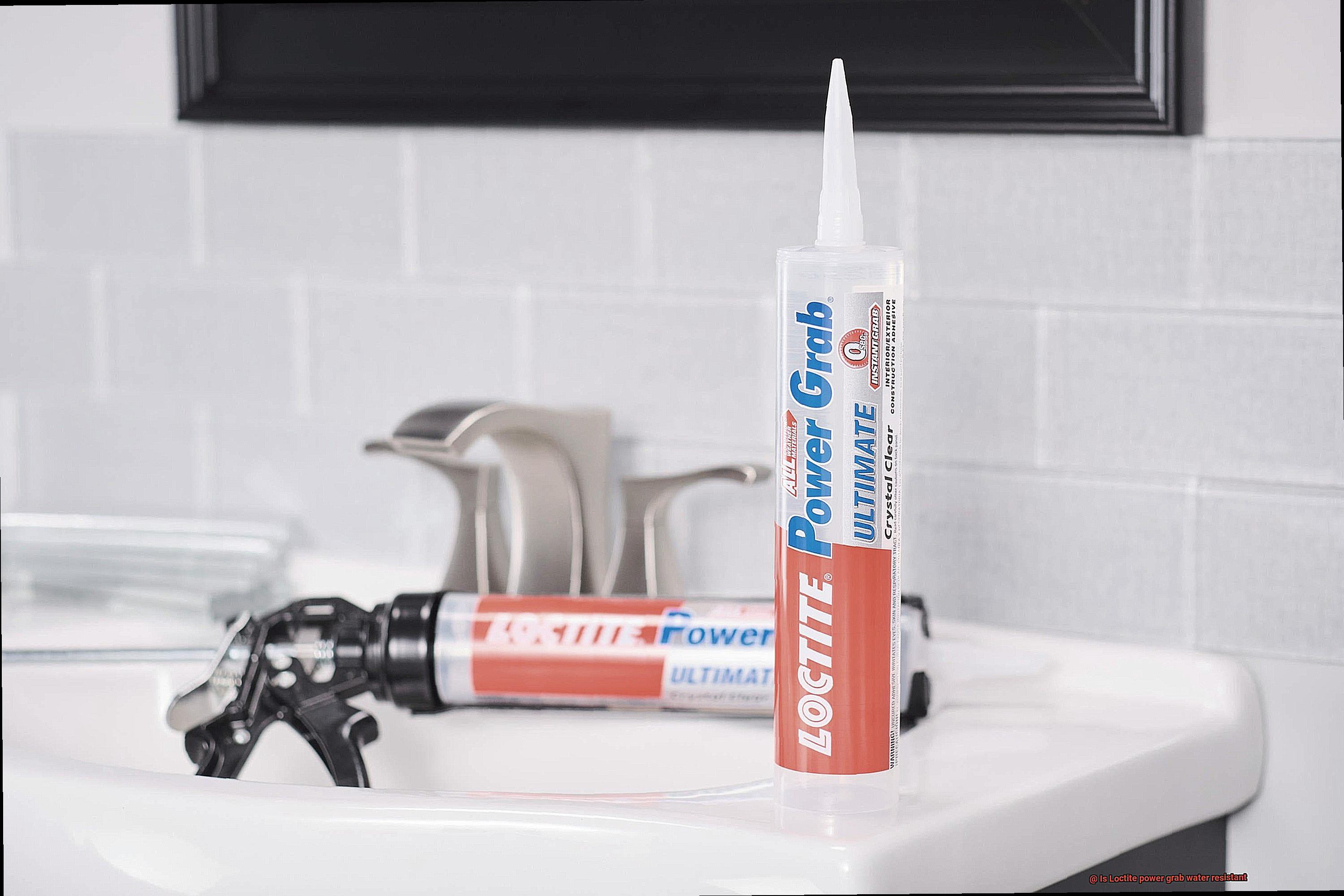
However, it’s important to note that while Loctite Power Grab is water resistant, it may not be suitable for continuous submersion in water. So if you’re working on a project that requires constant exposure to water, like an underwater application, it’s best to explore specialized adhesive options.
Benefits of Using Loctite Power Grab for Water Resistant Projects
Loctite Power Grab is a premium adhesive designed specifically for water-resistant projects. Its exceptional properties make it the ideal choice for various applications, including bathroom renovations, outdoor projects, and marine applications. In this article, we will explore the benefits of using Loctite Power Grab for water-resistant projects.
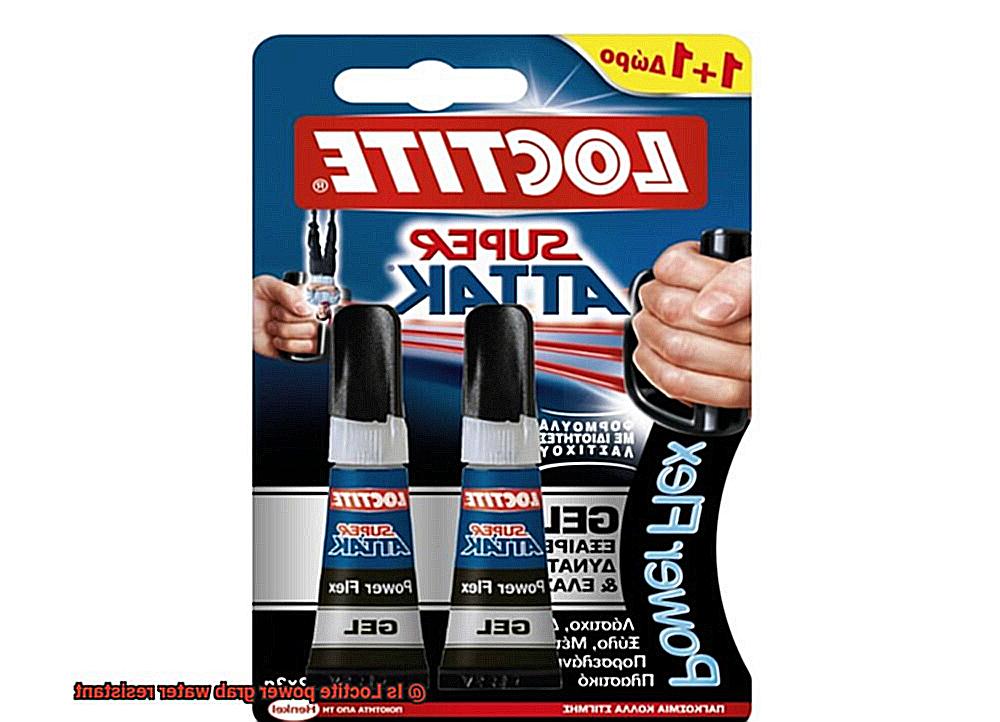
Unyielding Resistance to Moisture:
Loctite Power Grab’s premium formula allows it to withstand moisture without compromising its adhesive strength. This means that it can create durable bonds even in wet or humid conditions. With Loctite Power Grab, you can say goodbye to weak connections and trust that your project will withstand any water-based challenge.
Versatility at Its Finest:
No matter the material, Loctite Power Grab has got you covered. It effortlessly bonds with wood, metal, concrete, ceramic, and plastic, making it suitable for a wide range of water-resistant applications. Whether you’re sealing bathroom tiles or fixing outdoor furniture, Loctite Power Grab provides reliable adhesion across various surfaces.
Rapid Curing Time:
Time is precious, and Loctite Power Grab understands that. Its fast curing time ensures that your project is ready for action in no time. Within minutes, you’ll witness the adhesive forming a strong bond, and within 24 hours, your project will be fortified and protected against water damage.
Easy and No-Mess Application:
Gone are the days of messy applications and sagging mishaps. Loctite Power Grab features a no-drip formula and an instant grab feature that ensures effortless and hassle-free application. Whether you’re working on vertical surfaces or overhead installations, this adhesive stays put, giving you peace of mind throughout the process.
Cost-Effective Solution:
Water damage can be costly, but with Loctite Power Grab’s resistance to moisture, you can avoid expensive repairs or replacements. This adhesive provides a reliable and long-lasting solution, saving you both time and money in the long run. Invest in Loctite Power Grab for your water-resistant projects and enjoy its cost-effectiveness.
How to Maximize the Water Resistance of Loctite Power Grab
When it comes to finding a strong and water-resistant adhesive, Loctite Power Grab is a top choice. While it may not be completely waterproof, there are steps you can take to maximize its water resistance and ensure a long-lasting bond. In this comprehensive guide, we’ll share five key strategies to help you get the most out of this versatile adhesive.
Surface Preparation:
Before applying Loctite Power Grab, it’s crucial to prepare the surfaces properly. Cleanliness is key. Ensure that the surfaces are clean, dry, and free from any dirt or moisture. This will create a stronger bond and enhance water resistance. Grab a cloth or brush and give those surfaces a thorough cleaning for optimal results.
Apply Evenly:
Remember, a little goes a long way with Loctite Power Grab. Apply the adhesive in a thin and even layer to both surfaces being joined together. This ensures maximum contact and a secure bond. Avoid using too much adhesive, as excess moisture can compromise water resistance. Let the adhesive do its magic with precision.
Allow Ample Curing Time:
Patience is truly a virtue when it comes to maximizing water resistance with Loctite Power Grab. Give the adhesive enough time to cure for optimal results. Generally, it takes around 24 hours for Loctite Power Grab to fully cure, but always check the manufacturer’s instructions for specific curing times. Trust the process and let it work its wonders.
Mechanical Support:
For an extra layer of reinforcement, consider using clamps or other mechanical support tools to hold the surfaces together while the adhesive cures. This creates a tight seal and prevents water from seeping into the bond. Think of it as giving your project some added muscle.
Test for Water Resistance:
Once the bond has fully cured, it’s essential to test its water resistance before exposing it to harsh conditions. Lightly spray or dab water onto the bonded area and check for any signs of leakage or weakening of the bond. This final step ensures that your project is ready to withstand water with confidence.
Common Mistakes to Avoid When Using Loctite Power Grab for Water Resistance
Loctite Power Grab is a highly regarded adhesive that offers a strong bond and excellent water resistance. However, to ensure optimal performance, it’s important to steer clear of common mistakes that could compromise its effectiveness. In this article, we will explore the key errors to avoid when using Loctite Power Grab for water resistance, providing practical tips and examples.
Improper Surface Preparation:
To maximize the adhesive’s water resistance capabilities, proper surface preparation is crucial. Thoroughly clean the surface, eliminating any dust, grease, or contaminants. Neglecting this step can result in a weak bond and diminished water resistance.
Insufficient Adhesive Application:
Achieving exceptional water resistance requires applying Loctite Power Grab generously. Ensure full coverage of the surface, avoiding the mistake of using too little adhesive. This guarantees a strong bond and maximizes water resistance properties.
Excessive Adhesive Application:
While sufficient adhesive is necessary, applying an excess can lead to issues. Too much adhesive can cause uneven distribution and longer curing times, ultimately affecting overall water resistance performance.
Inadequate Curing Time:
Allow enough time for the adhesive to fully cure. Rushing this process may weaken the bond and reduce water resistance capabilities. Adhere to the manufacturer’s instructions regarding the specific curing time required for optimal results.
Unsuitable Material Selection:
Loctite Power Grab is designed for porous surfaces like wood, drywall, and concrete. It may not adhere well to non-porous materials such as plastic or metal, compromising its water resistance properties. Ensure you select appropriate materials for your project to maximize water resistance.
Improper Storage:
Improper storage of Loctite Power Grab can degrade its performance over time. Store the adhesive in a cool, dry place and tightly seal the cap after each use. Exposure to moisture or extreme temperatures can jeopardize the adhesive’s water resistance capabilities.
Alternatives to Loctite Power Grab for Waterproofing Projects
When it comes to waterproofing projects, Loctite Power Grab is a tried-and-true option known for its reliable water resistance and strong bond. However, there are several alternative options that can offer similar benefits. In this article, we will introduce you to some exciting alternatives and delve into their pros and cons.
Silicone Sealants:
Silicone sealants are the superheroes of moisture-prone areas like bathrooms and kitchens. They boast excellent water resistance and can form a flexible and durable bond on various surfaces. However, applying them neatly can be a bit tricky, and they may require a longer curing time compared to other alternatives.
Polyurethane Sealants:
Polyurethane sealants are the warriors of outdoor applications, ideal for sealing windows or roof joints. They are renowned for their exceptional water resistance and flexibility, allowing them to withstand extreme temperatures. However, they do come with a higher price tag than other options, and some formulations may require priming before application.
Epoxy Adhesives:
Epoxy adhesives are the powerhouses of bonding capabilities and water resistance. They can be used on concrete, metal, wood, and more. However, they may not be as flexible as other alternatives, which makes them less suitable for areas with continuous movement.
Waterproof Tapes:
For quick fixes or smaller projects, waterproof tapes are the speedy saviors you need. They are easy to apply and provide a temporary solution for sealing leaks or gaps. However, they may not offer the same long-term durability as other alternatives.
Conclusion:
When selecting an alternative to Loctite Power Grab for your waterproofing project, consider factors such as surface type, exposure to water or moisture, and expected movement or flexibility. Each alternative has its own unique advantages and drawbacks that should be carefully weighed. Reading product labels and instructions is crucial to ensure suitability for your specific application. Don’t hesitate to consult professionals or seek expert advice to make an informed decision.
AJpV_Ewnes0″ >
Conclusion
In conclusion, Loctite Power Grab proves its water resistance by withstanding occasional exposure to water and damp conditions without compromising its strong bond. While it may not match the effectiveness of specialized waterproof adhesives in continuous submersion or heavy moisture, it remains a suitable choice for interior applications like bathrooms or kitchens.
The composition of Loctite Power Grab, a latex-based adhesive, initially contains water as its solvent. However, once the adhesive cures, the water evaporates and leaves behind a resilient bond. When applied correctly and fully cured, Loctite Power Grab forms a robust and waterproof seal capable of enduring moisture and occasional contact with water.
It’s important to note that the level of water resistance may vary depending on factors such as application method, substrate surface, and conditions of use. To maximize the water resistance of Loctite Power Grab, it is crucial to prepare the surface properly, apply it evenly, allow ample curing time, provide mechanical support during curing, and conduct tests to ensure water resistance.
While Loctite Power Grab impresses with its ability to resist intermittent exposure to water, it may not be suitable for applications requiring continuous immersion in water or prolonged exposure to moisture. In such cases, it is advisable to explore specialized waterproof adhesives or sealants designed explicitly for those purposes.
Overall, Loctite Power Grab stands as a reliable choice for various projects demanding water resistance.

